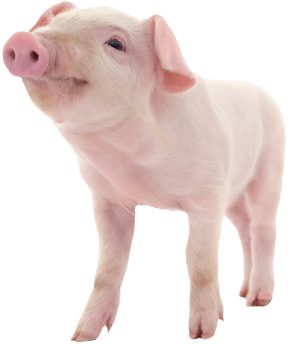
Surviving the Summer: How to Prevent Heat Stress in Livestock
|
|
Time to read 5 min
 You are being redirected to QC Supply Pharmacy, where you’ll find a wide selection of high-quality prescription and pharmaceutical products for animals of all sizes.
Enjoy the same great service and expertise you trust from QC Supply.
Click below to continue shopping.
Continue
No thanks, stay on the main site
Powered by
You are being redirected to QC Supply Pharmacy, where you’ll find a wide selection of high-quality prescription and pharmaceutical products for animals of all sizes.
Enjoy the same great service and expertise you trust from QC Supply.
Click below to continue shopping.
Continue
No thanks, stay on the main site
Powered by


|
|
Time to read 5 min
Like you, your livestock are warm-blooded and continually generate internal heat. And like you, livestock need to be kept cool during the intense heat of summer. Overheated animals will eat less, therefore produce less, and gain less weight. Heat stress can also lead to reproductive issues, and in some cases, can actually suppress immunity leading to respiratory problems like pneumonia. To avoid summertime dips in productivity and potential health problems, be sure to make available plenty of cold water, cool air, and shade. Beyond that, it may be worth your while to consider the role barn design can play in keeping your livestock cool, and the value of investing in a sprinkler and/or cooling system for your facility.
Animals gain heat in two ways: through conduction and radiation.
Heat stress can happen to your livestock if they’re not kept cool. For animals with sweat glands, like horses, keep an eye out for profuse sweating. For those that don’t sweat, like cattle and swine, look for open-mouthed panting. If you observe signs of stumbling, animals bumping into objects, or if they’re shaking, drop everything and get them into cold water immediately because heat stroke is likely imminent.
Using a watering system is a smart way to make sure your animals have a reliable source of fresh drinking water. You may consider adding electrolytes to it if your livestock seem at all sluggish. Some electrolytes are now available in flavors that can entice your stock to drink.
If you own horses it may be worth your while to contact an expert for a quick demonstration if you are not familiar with this method.
A persistent heat problem may lead you to consider a structural fix for your barn. You’ll want to evaluate whether or not making significant changes to your barns is worth the interruption that will result in your operation. Introducing one or more of the above cooling options may solve your problem. If alterations make sense, research the value of adding a ridge vent, if you lack one; and consider the floor plan of your barn.
The more room cattle have to move, the less heat they will pass animal to animal by conduction. A standard feed alley width should be 12 to 14 feet and the alley width behind stalls should be 10 to 12 feet. Wider alleys allow more air movement to keep your cattle cool.
Many holding areas have high, enclosed sides. During warm weather, these should be removed, if possible, to facilitate maximum air movement. Curtains can be used in cold weather. The ridge vent above the holding area should be large enough to exhaust heat and moisture. The holding area is where cattle will typically experience the most heat stress, so good design can be important.
Ridge vents can make a dramatic difference by releasing heat from the barn, and they will allow moisture and gases to vent more quickly, too. Uncapped vents work best, but you can also use a ridge cap with one foot of clearance.
With the hot summer months not too far off, now’s a good time to think about what sort of cooling you’re providing your livestock. Keeping your livestock cool in summer will help them to avoid heat related illness and help them maintain healthy productivity levels.